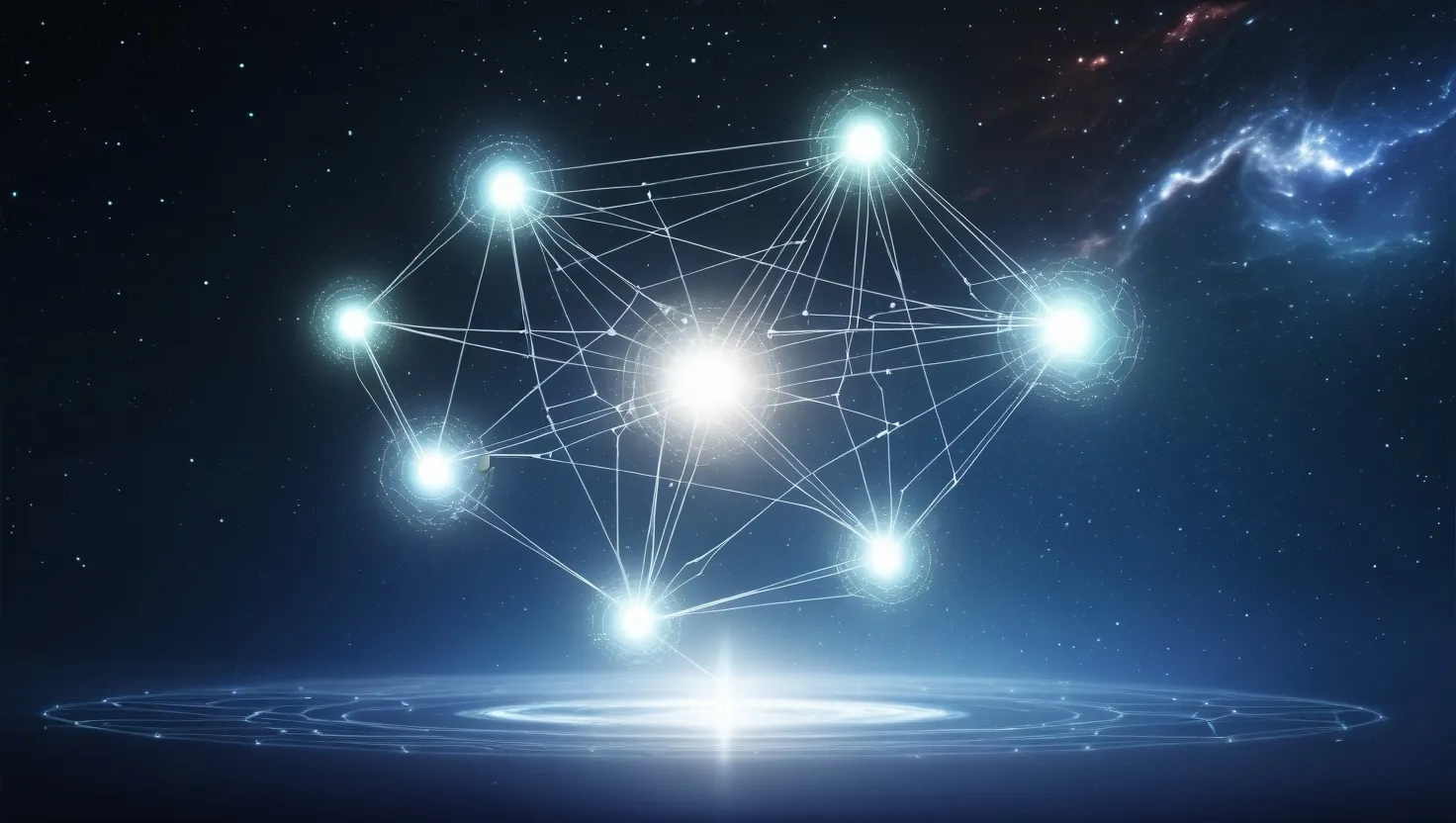Imagine a world where collaboration knows no bounds, where team members across the globe can connect in a way that transcends both physical and digital limitations. This vision is not about the latest video conferencing tools or cloud-based collaboration software; it’s about harnessing the power of quantum entanglement to create an interconnected network of minds that can work in perfect harmony.
Quantum entanglement, a phenomenon where the state of one particle is inherently tied to the state of another, regardless of the distance between them, has long fascinated physicists. Recently, groundbreaking experiments at CERN’s Large Hadron Collider (LHC) have observed this phenomenon at the highest energies yet, between top quarks and their antimatter counterparts. This breakthrough opens up new avenues for understanding and applying quantum mechanics in unprecedented ways.
In the context of teamwork and collaboration, the concept of quantum entanglement can be metaphorically extended to create a hyper-collaborative ecosystem. Here, the idea is not just about sharing files or communicating over the internet but about creating a collective consciousness where ideas and insights flow freely and instantaneously.
To understand how this could work, let’s delve into the principles of quantum entanglement. When two particles are entangled, measuring the state of one particle instantly affects the state of the other, even if they are separated by vast distances. This phenomenon challenges classical notions of space and time, suggesting a deeper, interconnected reality.
Applying this to a team setting, imagine each team member as an entangled particle. When one member has an idea or insight, it could instantly resonate with others, regardless of their physical location. This isn’t just about rapid communication; it’s about a shared mental state that allows for seamless collaboration.
The recent experiments at the LHC, where physicists observed entanglement between top quarks, highlight the potential for studying and applying entanglement in new and complex systems. The top quark, being the heaviest known fundamental particle, decays quickly into other particles, but its quantum traits are preserved in these decay products. By analyzing these products, scientists can infer the quantum state of the top quark, a feat that is impossible with other quarks.
Similarly, in a hyper-collaborative team, each member’s unique perspective and skills could be seen as the quantum traits that, when combined, create a cohesive and powerful whole. Just as the decay products of the top quark reveal its quantum state, the collective output of the team could reflect the entangled state of their minds.
But how do we translate this into practical reality? One approach could involve leveraging advanced technologies that mimic the principles of quantum entanglement. For instance, researchers at Princeton University have successfully entangled individual molecules, a breakthrough that could pave the way for new platforms in quantum science. These molecules, when entangled, remain correlated even if they are miles apart, much like the particles in quantum entanglement.
In a team setting, this could mean developing tools that facilitate a similar level of correlation and instantaneous communication. Imagine a virtual workspace where ideas are not just shared but resonate through the entire team in real-time, fostering a collective intelligence that is greater than the sum of its parts.
This concept is not just theoretical; it has practical implications for how we approach complex global challenges. Traditional barriers to cooperation, such as time zones and physical distance, dissolve in a hyper-collaborative ecosystem. Innovations emerge from the shared thoughts and inspirations of the team, much like how entangled particles seem to communicate instantaneously.
Moreover, the use of quantum principles in collaboration could also enhance creativity and problem-solving. When team members are connected in a way that transcends conventional communication, they can tap into a collective creativity that is not limited by individual perspectives. This is akin to the quantum many-body systems that physicists are exploring, where novel forms of magnetism and other emergent behaviors appear.
The potential for this approach is vast. It could revolutionize how organizations tackle complex problems, from developing sustainable solutions to addressing global health crises. By creating a network of minds that are entangled in a quantum sense, we can achieve a level of synergy and collective intelligence that was previously unimaginable.
In this future, teamwork is not just about coordination but about a deep, almost telepathic connection between team members. Ideas flow freely, unhindered by distance or time zones, creating an environment where creativity and problem-solving operate at unprecedented speeds.
While we are still in the early stages of understanding and applying quantum entanglement, the possibilities are exciting. As scientists continue to explore the mysteries of quantum mechanics, we may find that the principles of entanglement hold the key to a new era of collaboration and collective intelligence.
In this hyper-collaborative world, the boundaries between individuals dissolve, and what remains is a seamless, interconnected network of minds working in perfect harmony. It’s a vision that challenges our current understanding of teamwork and collaboration but offers a promising future where collective intelligence and synergy know no bounds.






